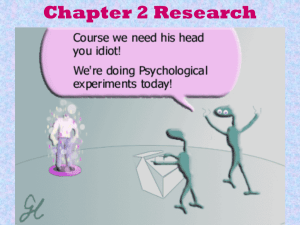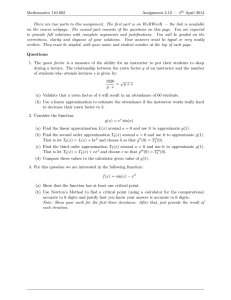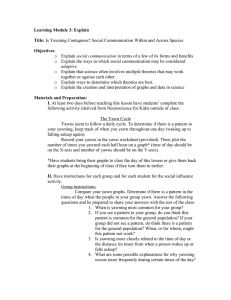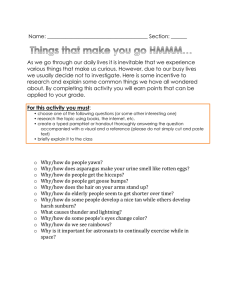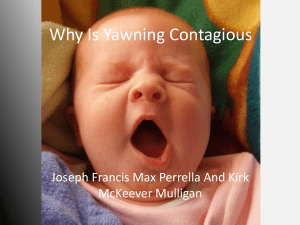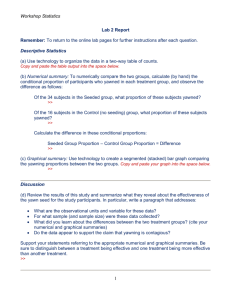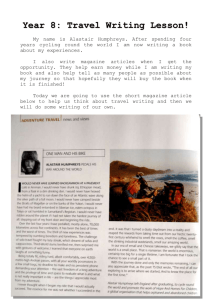Maggie Renken Lesson 3 Handout
advertisement
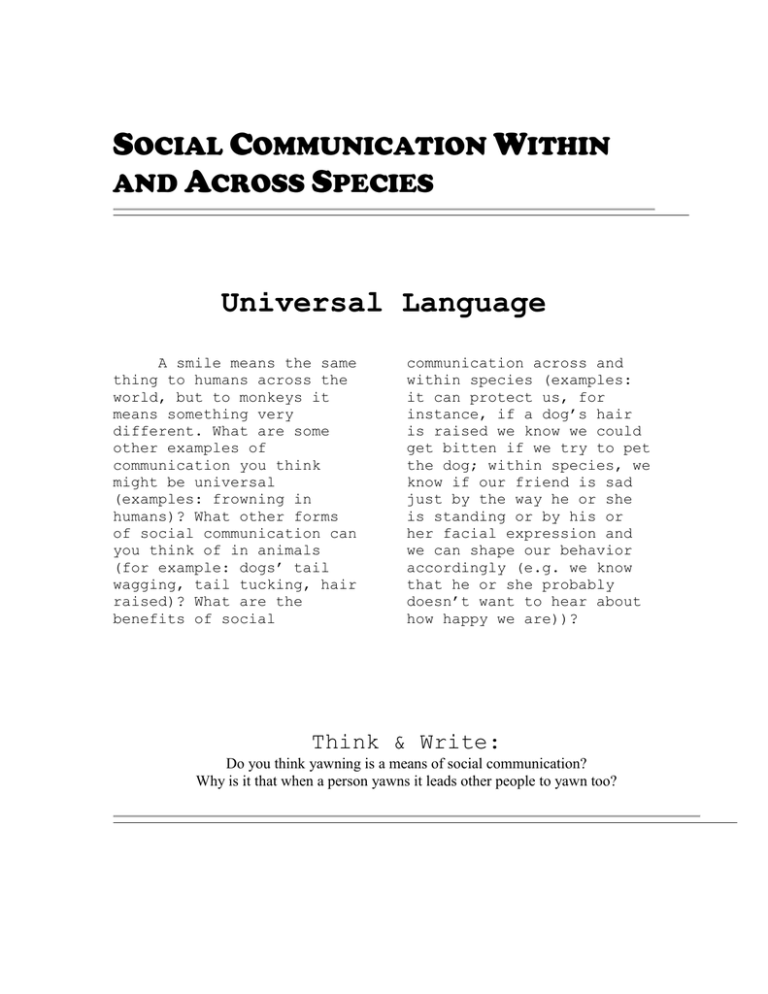
SOCIAL COMMUNICATION WITHIN AND ACROSS SPECIES Universal Language A smile means the same thing to humans across the world, but to monkeys it means something very different. What are some other examples of communication you think might be universal (examples: frowning in humans)? What other forms of social communication can you think of in animals (for example: dogs’ tail wagging, tail tucking, hair raised)? What are the benefits of social communication across and within species (examples: it can protect us, for instance, if a dog’s hair is raised we know we could get bitten if we try to pet the dog; within species, we know if our friend is sad just by the way he or she is standing or by his or her facial expression and we can shape our behavior accordingly (e.g. we know that he or she probably doesn’t want to hear about how happy we are))? Think & Write: Do you think yawning is a means of social communication? Why is it that when a person yawns it leads other people to yawn too? YAWNING FACTS: 1. On average, yawns are six seconds long. 2. Humans first yawn 11 weeks after conception (That’s before they are born! And fetuses do not take in oxygen through their lungs.) 3. Between one and two years of age, yawns become contagious to humans. This is the same age when humans begin to recognize themselves in the mirror. 4. During a yawn, heart rate can increase up to 30 percent. 5. 55 percent of people will yawn within five minutes of seeing someone else yawn. 6. Blind people yawn more after hearing an audiotape of people yawning. 7. Reading about yawning will make you yawn. 8. Olympic athletes often yawn before competition. 9. Some birds, reptiles, and even fish yawn. Most mammals also yawn. YAWNING EXPERIMENTS: 1. Neurotransmitters (such as dopamine) and neuropeptides increase yawning if injected into the hypothalamus of animals. 2. Yawning is a social cue for everyone in a group to sleep at the same time 3. “Our data [from a study of chimps] suggest that contagious yawning is a by-product of the ability to conceive of yourself and to use your experience to make inferences about comparable experiences and mental states in others.” --Gordon Gallup, an evolutionary psychologist 4. When a yawn occurs, teeth are exposed. This may be interpreted as intimidating and result in “contagious” yawns. 5. 17-19 year old students who watched music videos yawn less (3.41 yawns in 30 minutes) than students who watched a color test bar pattern (5.78 yawns in 30 minutes). --Dr. Provine, psychologist (a leading expert on yawning) 6. Dr. Provine also found that breathing just carbon dioxide (and exercise, for that matter) causes faster breathing, but dos not result in an increased number of yawns. 7. Yawning and breathing are controlled by different mechanisms. 8. A closed mouth yawn feels “unsatisfying.” –Dr. Provine 9. Yawning is a protective reflex to redistribute surfactant that helps lubricate lungs and keeps them from collapsing. 10. The brain prompts a yawn to get more air into the lungs, because if the air sacs in the lungs do not get fresh air, they partially collapse and the lungs stiffen a bit. --Dr. Barry Make, a pulmonologist 11. Humans may have used yawns at one time to indicate a change in social activity. YAWN THEORIES: 1. The Stretching TheoryYawning stretches the lungs and lung tissue. Stretching and yawning may be a way to flex muscles and joints, increase heart rate, and feel more awake. 2. The Physiological TheoryYawning is an effort to draw in more oxygen or remove a build up of carbon dioxide in the lungs. 3. The Evolution TheoryYawning developed from early man for adaptive reasons 4. The Boredom TheoryThe dictionary definition of yawning says yawns occur a result of boredom or fatigue. Theory 1 2 3 4 Support Facts Experiments Facts Oppose Experiments Think & Write: Based on the findings from the yawn cycle and social influence activities, which theory or theories do you think explain your findings? Reflection Where should research go now? Just because the experiments we conducted in class seemed to support specific theories, how could an experiment be designed to test other theories?
